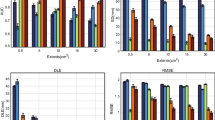Abstract
Cosparsity as a useful prior has been extensively applied in accurate compressive sensing (CS) recovery of multichannel electroencephalogram (EEG) signals from only a few measurements. Latest studies proved that exploiting cosparsity and channel correlation in a unified framework can obtain accurate recovery results. However, all these methods ignore the adjacent relationship between the real physical electrodes and exploit the inaccurate channel correlation. Another problem is that most methods employ convex regularizations to exploit cosparsity and channel correlation, which cannot obtain competitive results. In this paper, a novel graph Fourier transform and nonconvex optimization (GFTN)-based method is proposed to enforce inherent correlation across different channels and cosparsity. Alternative direction method of multipliers is used to solve the resulting nonconvex optimization problem. Experiments show that GFTN can remarkably improve the performance of CS recovery for multichannel EEG signals.




Similar content being viewed by others
Explore related subjects
Discover the latest articles, news and stories from top researchers in related subjects.References
Abdulghani AM, Casson AJ, Rodriguez-Villegas E (2012) Compressive sensing scalp EEG signals: implementations and practical performance. Med Biol Eng Comput 50(11):1137–1145
Boyd S, Parikh N, Chu E, Peleato B, Eckstein J (2011) Distributed optimization and statistical learning via the alternating direction method of multipliers. Found Trends Mach Learn 3(1):1–122
Cand EJ, Wakin MB (2008) An introduction to compressive sampling. IEEE Signal Process Mag 25(2):21–30
Casson AJ, Yates D, Smith S, Duncan JS, Rodriguez-Villegas E (2010) Wearable electroencephalography. IEEE Eng Med Biol Mag 29(3):44–56
Chartrand R, Yin W (2008) Iteratively reweighted algorithms for compressive sensing. In: IEEE international conference on acoustics, speech & signal processing, pp 3869–3872
Dong W, Shi G, Li X, Ma Y, Huang F (2014) Compressive sensing via nonlocal low-rank regularization. IEEE Trans Image Process Publ IEEE Signal Process Soc 23(8):3618–3632
Donoho DL (2006) Compressed sensing. IEEE Trans Inf Theory 52(4):1289–1306
Feng L, Sun H, Sun Q, Xia G (2016) Image compressive sensing via truncated schatten-p norm regularization. Signal Process Image Commun 47:28–41
Higashi H, Tanaka T, Tanaka Y (2015) Smoothing of spatial filter by graph Fourier transform for eeg signals. In: Asia-Pacific signal and information processing association, 2014 summit and conference
Hooda A, Sharma S (2013) Wireless body area network. In: Proceedings of international symposium on medical information & communication technology, vol 3, no 3, pp 203–210
Hosseini Kamal M, Shoaran M, Leblebici Y, Schmid A (2013) Compressive multichannel cortical signal recording. In: IEEE international conference on acoustics, speech & signal processing, pp 4305–4309
Liu Y, De VM, Van HS (2015) Compressed sensing of multichannel EEG signals: the simultaneous cosparsity and low-rank optimization. IEEE Trans Bio-med Eng 62(8):2055–2061
Majumdar A, Ward RK (2015) Energy efficient EEG sensing and transmission for wireless body area networks: a blind compressed sensing approach. Biomed Signal Process Control 20:1–9
Malmivuo J, Plonsey R (1995) Bioelectromagnetism: principles and applications of bioelectric and biomagnetic fields. Part 1. Oxford University Press, New York
Nam S, Davies ME, Elad M, Gribonval R (2011) The cosparse analysis model and algorithms. Appl Comput Harmon Anal 34(1):30–56
Qi F, Li Y, Wu W (2017) RSTFC: a novel algorithm for spatio-temporal filtering and classification of single-trial EEG. IEEE Trans Neural Netw Learn Syst 26(12):3070–3082
Rao BD, Kreutz-Delgado K (1999) An affine scaling methodology for best basis selection. IEEE Trans Signal Process 47(1):187–200
Shu X, Yang J, Ahuja N (2014) Non-local compressive sampling recovery. In: International conference on computational photography, pp 1–8
Wang J, Wang M, Hu X, Yan S (2015) Visual data denoising with a unified schatten-p norm and q norm regularized principle component pursuit. Pattern Recognit 48(10):3135–3144
Wormann J, Hawe S, Kleinsteuber M (2013) Analysis based blind compressive sensing. IEEE Signal Process Lett 20(5):491–494
Wu W, Chen Z, Gao X, Li Y, Brown EN, Gao S (2015) Probabilistic common spatial patterns for multichannel EEG analysis. IEEE Trans Pattern Anal Mach Intell 37(3):639–653
Wu W, Nagarajan S, Chen Z (2016) Bayesian machine learning: EEG/MEG signal processing measurements. IEEE Signal Process Mag 33(1):14–36
Xie Y (2015) Weighted schatten $p$-norm minimization for image denoising with local and nonlocal regularization. Eprint Arxiv
Zhang Z, Jung TP, Makeig S, Rao BD (2013) Compressed sensing of EEG for wireless telemonitoring with low energy consumption and inexpensive hardware. IEEE Trans Biomed Eng 60(1):221–4
Acknowledgements
The authors would like to express their gratitude to the anonymous referees as well as the Editor and Associate Editor for their valuable comments, which led to substantial improvements of the paper. This work was supported by the National Natural Science Foundation of China (Nos. 61772272 and 61801199), the Natural Science Fund Project of Colleges in Jiangsu Province (No. 18KJB520017) and the High-level Talent Scientific Research Foundation of Jinling Institute of Technology (No. jit-b-201801).
Author information
Authors and Affiliations
Corresponding author
Additional information
Publisher's Note
Springer Nature remains neutral with regard to jurisdictional claims in published maps and institutional affiliations.
Rights and permissions
About this article
Cite this article
Zou, X., Feng, L. & Sun, H. Compressive Sensing of Multichannel EEG Signals Based on Graph Fourier Transform and Cosparsity. Neural Process Lett 51, 1227–1236 (2020). https://doi.org/10.1007/s11063-019-10150-5
Published:
Issue Date:
DOI: https://doi.org/10.1007/s11063-019-10150-5




